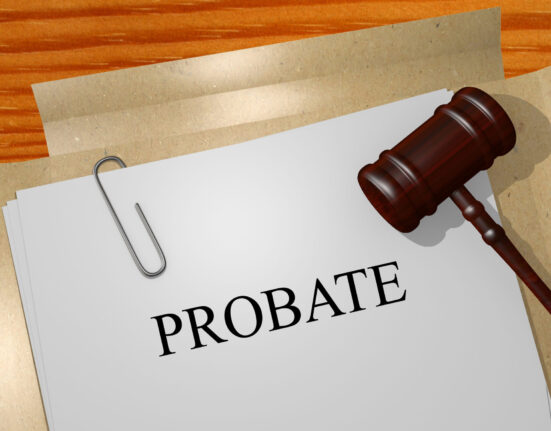Isha a 2nd Year Law student at Lloyd law college has written this article explaining the KELSON PURE THEORY OF LAW
INTRODUCTION
Hans Kelson, an Austrian jurist, developed the pure theory of law, a positivist approach aiming for a comprehensive understanding of legal systems. Central to this theory is the “grundnorm,” an assumed norm that provides legitimacy and power to other legal norms. Legal norms form a hierarchy with the Constitution at the top, guiding other laws like statutes and regulations. Kelson emphasized legal science’s independence, unaffected by moral or sociopolitical factors. The grundnorm is a necessary fiction, assuming acceptance of the Constitution and derived norms.
HANS KELSON
The Hans Kelson was an Austrian jurist and philosopher. Hans Kelson was born in Prague in 1881 and was a law professor at Vienna University. Later, he moved to England and then to the United States, becoming a law professor at various universities. He lastly was an emeritus professor of political science at the university of California, where he developed his pure theory of law in the twentieth century. He was also the judge of the supreme constitutional court of Austria for ten years during 1920-1930. After some time, he shifted in England. Kelson is the author of a number of books, including the Austrian constitution (1920), General theory of law and state (1945), The Kelson pure theory of law (1934) revised (1960), principle of international law (1952), what is justice (1957), and others.
KELSON PURE THEORY OF LAW
Kelson’s Pure Theory of Law is considered a revival of John Austin’s 19th-century analysis of law. Unlike Austin, Kelson emphasized separating law from other non-legal fields and avoided incorporating all social sciences. Like Austin, Kelson focused on creating a pure science of law devoid of moral or sociological elements. Kelson rejected Austin’s definition as a command, which introduces subjective considerations, whereas he sought to make legal theory objective. He also rejects the notion of ‘justice’ as an integral part of law, as many laws, even if unjust, may continue to exist as law. Kelson defines science as a ‘system of knowledge’ or ‘total set of cognitions.
MAIN PRINCIPLES UNDER PURE THEORY OF LAW
Law as Normative science
Kelson described law as a “normative science” as distinguished from natural sciences which are based on cause and effect, such as law of gravitation. The laws of natural science are capable of being accurately described, determined and to discovered in the form of ‘is’ (das sain) which is an essential characteristic of all natural sciences. But the science of law is knowledge of what law ought to be (das-sollen). It is the ‘ought’ character which provides normative character to law. For instance, if ‘A’ commits a theft he ought to be punished. Like Austin, Kelson also considers sanction as an essential element of law but he prefers to call it ‘norm’. Thus, according to kelson, ‘law is a primary norm which stipulates sanction’. It is called positive law because it is concerned only with ideal law.
According to Kelson, ‘norm (sanction) is rules forbidding or prescribing a certain behaviour’. For him, a legal order is the hierarchy of norms having sanction and jurisprudence is the study of these norms which comprise legal order. He distinguishes moral norm with legal no. For example, moral norm says that ‘one shall not steal’ but since it has no punitive consequences, it lacks coercive force but if it is to be reduced in form of legal norm, it would say, “if a person steals, he ought to be punished by the competent or state”. This ‘ought’ in the legal norm refers to the sanction to be applied for violation of law.
The ‘Grundnorm’
Kelson’s pure theory of law is based on a hierarchical structure of norms, with the ‘Grundnorm’ at the top. This Grundnorm gives validity and content to other derived norms, forming a pyramid of legal authority. Each norm derives its power from the one immediately superior until it reaches the Grundnorm. The legal system’s norms proceed from bottom to top, closing at the Grundnorm.
The Grundnorm is an assumed norm accepted by individuals within the legal system as the basis for its validity. It serves as the ultimate source of authority and legitimacy for all other legal norms. Although the Grundnorm itself is not subject to legal validity, it is through this assumption that legal norms acquire their normative force. Kelson’s theory focuses on creating a pure science of law, excluding moral and sociological aspects, while emphasizing the hierarchical structure of norms and the pivotal role of the Grundnorm in establishing legal validity.
Pyramid of Norms
In Kelson Pure Theory of Law Kelson defines legal science as a ‘pyramid of norms’ with the basic norm (Grundnorm) at the top. Subsequent norms are governed by norms higher in the hierarchy. The basic norm (or ‘Grundnorm’) is independent of any norm being at the top. Kelson defines the process of a norm deriving its authority from the norm immediately above it until it gets to the Grundnorm as the ‘concretion’ of a legal system. The system of norms moves from downwards to upwards until the Grundnorm reaches the top. The Grundnorm can be taken for granted as the norm creating organ and cannot be proven scientifically or validated by any norm. For example, a statute or law is valid by virtue of its legal authority derived from the legislative body. The legislative body in turn derives its authority derived from a norm, i.e., the Constitution.
The unity of the legal order according to Kelson is that all of the manifold norms that make up the legal order can be connected to a final source. That final source, according to Kelson, is the “basic norm” or the “grundnorm” (which he defined as the “postulated ultimate rule by which the norms established and revoked, accept or revoke their validity”).
SALIENT FEATURES OF KELSON’S PURE THEORY OF LAW
- The theory aimed at reducing chaos and confusion created by the supporters of natural law philosophy.
- Pure theory of law deals with the knowledge of what law is, and it is not concerned about: what law ought to be.
- The theory considers law as a normative science and not a natural science.
- Kelson’s pure theory of law is a theory of norms not so much concerned with the effectiveness of the legal norm.
- It is formal theory confined to a particular system of positive law as actually in operation.
CRITICISM OF KELSON’S PURE THEORY OF LAW
Firstly, it excludes all references of social facts and felt needs of the society. Thus, his pure theory of law is without any sociological foundation.
Secondly, kelson’s assertion that all the norms excepting the basic norm (grundnorm) are pure, has no logical basis. One really fails to understand as to how subsequent norms which derive their authority from the grundnorm can be pure when the grundnorm itself is based on a hypothesis that it is an outcome of the combination of various social and political factors and circumstances in a given situation. Commenting on this point, Julius stone has sarcastically remarked, “we are invited to forget the illegitimacy of the ancestor in administration of the pure blood of the progeny”.
Thirdly, the theory is found to be based on hypothetical consideration without any practicability. It is not possible to divest law from the influence of political ideology and social needs.
Fourthly, as stated by Friedmann, kelson’s theory provides no solution for the conflicts arising out of ideological differences. His theory rejects the element of justice as a mere emotion which is, indeed, not true. Law cannot be completely divorced from ethics and morality which gives it an honourable place in the society.
PURE THEORY OF LAW AND ITS APPLICATION ON INDIAN LEGAL SYSTEM
The fact that a Constitution of India can be amended at any point in time shows that the authority of the Constitution can be deviated from. When a constitutional provision is amended significantly, the legislation falling under that provision loses its legality. Similarly, when a provision is annulled, the same thing happens. Therefore, it is wrong to call the Constitution the ‘Grundnorm’. In the light of the above, the ‘Grundnorm’ of the Constitution in India is to be found within the ‘Basic Structure’. The ‘Basic Structure’ of the Constitution can also be called the ‘rule of recognition’ or ‘grundnorm’, which is indeed the ‘ultimate Basis’ of the legal system as the legislation falling under the Constitution gains legitimacy from the norms defined in the basic structure. Some of the main features of the ‘Basic Structure’ are:
- The supremacy of the Constitution
- India as a sovereign nation
- India as a socialist state
- India as a secular democracy
- India as a republic
- The federal nature of the Constitution
The concept of basic structure emerged in Kesavananda Bharati v. State of Kerala (1973), where it limits Parliament’s power to amend the Constitution. The final recognition rule relies on this concept. In Indira Gandhi v. Raj Narayan (1975), the Supreme Court invalidated an amendment, considering it outside the scope of the fundamental structure. Minerva Mill & Ors. v. Union of India (1980) confirmed that the basic structure includes limited parliamentary power and harmony between fundamental rights and directive principles. Amendments cannot alter the Constitution’s basic structure. Thus, India’s legal order aligns with Kelson’s theory of law.
LEGACY AND INFLUENCE
Despite the criticism, kelson’s pure theory of law has had a profound impact on legal philosophy and jurisprudence. It advanced legal positivism and offered a logical framework for analyzing legal systems. Kelson’s work influenced jurists like Herbert Hart and Alf Ross and continues shaping legal theories.
CONCLUSION
In Kelson’s Pure Theory of Law, he challenges us to consider the distinction and relationship between fact, norm, and the law’s impact on the norm. Kelson proposed an internally uniform court process model that mirrors the intuitive reasoning of lawyers and legislators. It is common legal sense to trace the legality of a law back to the Constitution. The idea that valid laws are an internally uniform system of law is also wrong. Kelson, unlike his predecessors, recognised the law of primitive communities and the law of the world as law. His theories are often criticised for their idea and internal consistency. However, he wrote the most illuminating account of the century’s legal process. While not universally accepted, some of his doctrines have influenced common legal theory. Kelson’s fallacies and fallacies shaped not only the development of legal theory but also jurisprudence.
Critics may question whether his theory is capable of describing legal systems as they exist today. Some kinds of law are hard to explain using Kelson’s concept of law as an example with a penalty attached. Procedural law, evidential law, laws creating organizations, laws granting rights and freedoms, and laws eliminating other laws don’t easily fit the pure theory. At this stage of history, Kelson’s arguments for the logical relationship between international and national legal systems are not convincing. Despite criticisms, Kelson’s complex and inaccurate ideas have significantly enhanced the subject of law.
To read similar contents ‘click here’
REFERENCES
- https://plato.stanford.edu/Archives/Win2005/entries/lawphil-theory/
- https://blog.ipleaders.in/pure-theory-law-exhaustive-analysis/
- https://lawcorner.in/kelsens-pure-theory-of-law-objectives-essential-and-criticism/
- https://www.patnalawcollege.ac.in/econtent/lec%206-Jurisprudence(%203rdSem).pdf







Leave feedback about this